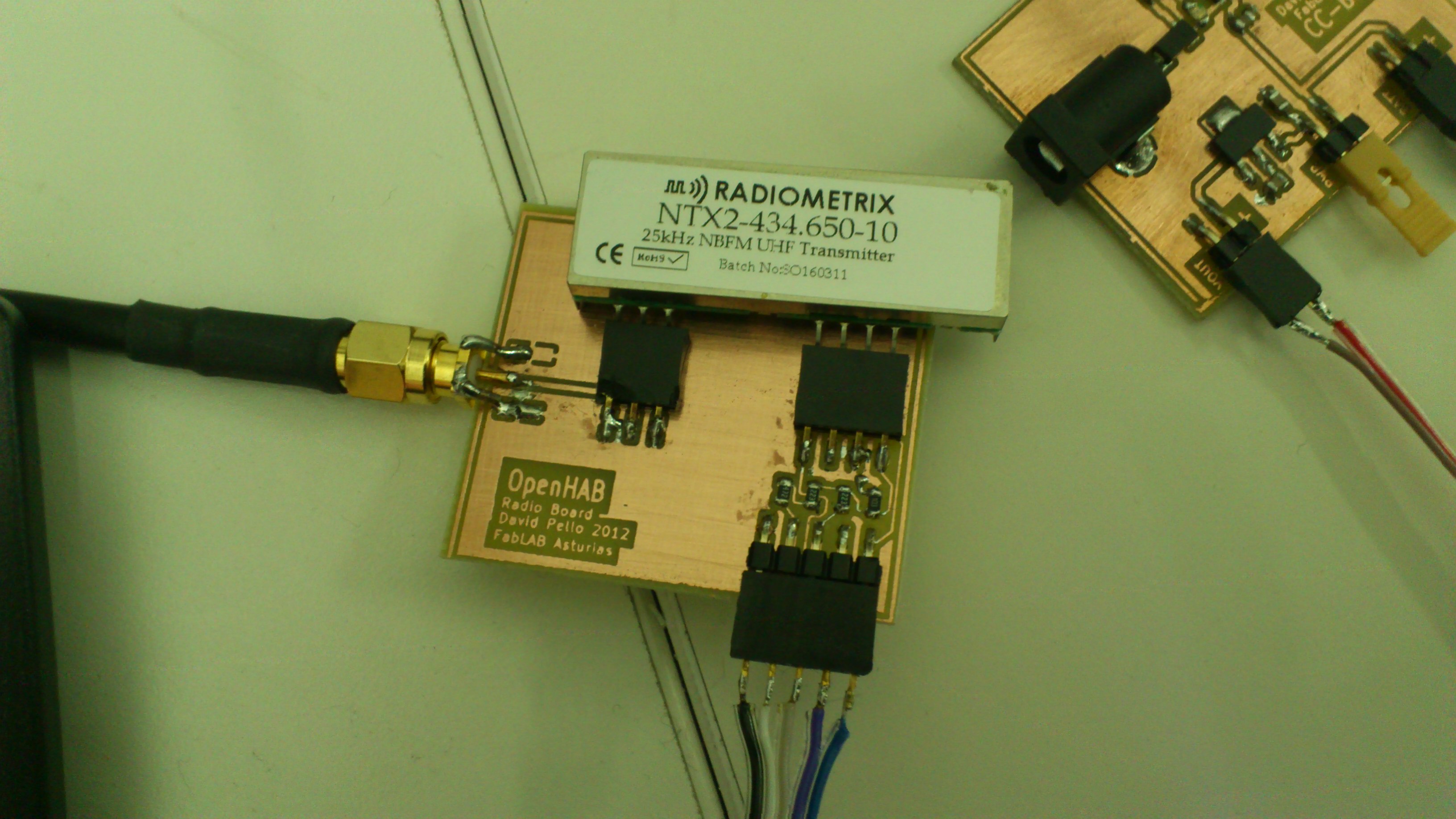Classes > Networking and Communications
For this assignment I wanted to desing the radio system of my final project. So I started looking for a low-power radio module capable of sending information over big distances, as a meteorological ballon can reach 35km high (~115000 feet). After reading about the radiometrix modules (some picosatellite projects used them) I decided to give them a try. I'm using the UHF NXT2 module, 10mW at 434.650 MHz. 10mW is not much RF power, but using a nice directional antenna on the receiver you can archieve this distances. Then I needed to choose a protocol. As I am into amateur radio, I know some radio protocols used to send data over big distances and high noise, so I choosed the RTTY protocol. RTTY (Radio-Teletype) is a simple binary protocol, that uses two close frecuencies to transmit two signals, known as mark and space. As the symbols go into two different frequencies, is a very good mode for low power with high noise/signal ratio. NTX2 module are FM modules, you provide an analog signal on the input pin, and you got frequency modulated RF signal on the output. So sending two frequencys for the RTTY mode was just a matter of using two pins on the microcontroller and using two voltage dividers to output two different voltage levels to the NTX2 module and so, two close frequencies on the RF output. Resistors were chosen to have a standard frequency-gap for a RTTY transmission.
Video receiving messages with the Funcube Dongle SDR and decoding them with fldigi:




